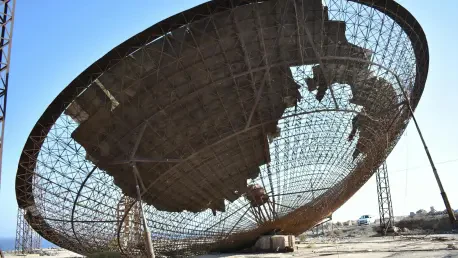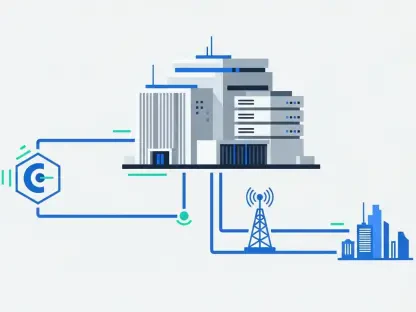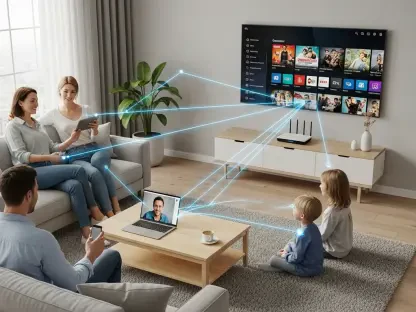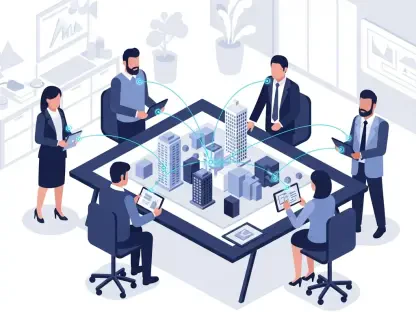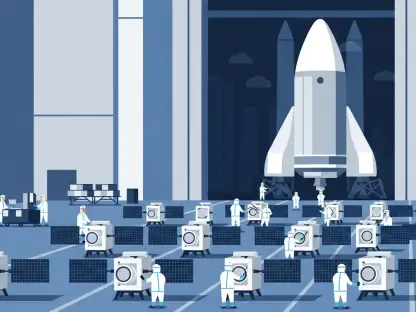In the ever-evolving field of telecommunications, Vladsilav Zaimov stands out as a seasoned expert specializing in enterprise telecommunications and the risk management of vulnerable networks. With the recent approval of a unified framework for non-cellular satellite IoT in the 862–870MHz band by the European Conference of Postal and Telecommunications Administrations (CEPT), there is much to explore about its implications. Welcome, Vladsilav, to discuss how this new regulatory framework can potentially reshape the landscape of IoT in Europe and beyond.
Can you explain the significance of CEPT’s approval of the new framework for non-cellular satellite IoT in the 862–870MHz band?
The CEPT’s approval marks a substantial turning point for satellite IoT communications in Europe. By establishing a unified framework, it brings about consistent regulatory structure for non-cellular satellite IoT, allowing for the harmonized use of the 862–870MHz band. This change paves the way for seamless satellite connectivity for IoT devices, overcoming the previous fragmented regulatory environment that hindered growth and innovation in this sector.
How will this new framework affect LoRaWAN services in Europe?
For LoRaWAN services, this framework is a game changer. It simplifies the deployment process across different European countries, which previously operated under a piecemeal regulatory setup. This means that companies leveraging LoRaWAN can now expand and operate with greater confidence, knowing that there is legal clarity and consistent regulations across the region. This is likely to accelerate the adoption of LoRaWAN for various applications, particularly in remote or underserved areas.
What were some of the challenges that LoRaWAN faced under the previous patchwork regulations?
Under the prior patchwork regulations, LoRaWAN providers had to navigate a complex and restrictive landscape. Each country had its regulations, which often resulted in significant delays and added costs to roll out services. This fragmented approach made scaling operations difficult and hindered the development of a cohesive strategy for broad network deployment, ultimately stifling innovation and slowing the market’s growth potential.
How many European countries have implemented this new decision, and are there plans for more to join?
As of now, 22 European countries have adopted this decision, providing a solid foundation for further expansion and consistency across the continent. The framework’s success has piqued the interest of regulators from other regions, such as the Middle East, which plan to implement similar regulations. This indicates a promising trend towards more comprehensive and streamlined IoT communications on a broader geographical scale.
What role has the LoRa Alliance played in advocating for this regulatory change?
The LoRa Alliance has been instrumental in advocating for this change. Through relentless efforts and collaboration with European regulators, they have facilitated the transition to a more open regulatory environment. Their advocacy ensures that LoRaWAN and other IoT technologies have access to the essential frequency bands needed for development and expansion, underscoring their pivotal role in driving the IoT sector forward.
Can you discuss the collaboration between LoRa Alliance and European regulators that led to this framework?
The collaboration between the LoRa Alliance and European regulators has spanned several years, focusing on aligning the technical and regulatory requirements for the effective implementation of satellite IoT in the 862-870MHz band. This partnership aimed to harmonize spectrum allocation to guarantee a consistent and stable environment for IoT innovations, addressing both technical challenges and regulatory hurdles collectively.
How does this regulatory framework impact other IoT technologies using the SRD band, like Sigfox?
While the framework is a triumph for LoRaWAN specifically, it also impacts other technologies like Sigfox, which operate within the same frequency band. By standardizing the use of the SRD bands, it allows these technologies to operate with decreased regulatory impediments, fostering an environment where diverse IoT solutions can coexist and thrive, thereby enriching the ecosystem and driving overall growth.
What are some of the technical parameters that have been clarified in the new framework?
One key technical parameter clarified in the new framework is power flux density. This parameter is essential for optimizing the use of the spectrum and ensuring that transmissions do not interfere with existing terrestrial and mobile services. It provides a clear guideline for deploying IoT networks while protecting the integrity of adjacent band services, facilitating smooth and efficient communication.
Why is power flux density an important parameter in this context?
Power flux density plays a crucial role in managing interference and ensuring reliable communication across the network. By setting limits on the power levels for devices operating within the band, the framework protects existing services and reduces the risk of potential conflicts. This is particularly important in densely populated areas or at regions where spectrum sharing is necessary.
How might this framework influence satellite operators in terms of security concerns, like spying?
The framework integrates security measures to address potential concerns about spying or unauthorized access. By specifying technical conditions, such as power levels and operational protocols, it helps ensure that satellite transmissions remain secure and compliant with international standards. This provides satellite operators with a more secure operational environment, fostering trust and encouraging broader participation.
What industries stand to benefit from satellite-based LoRaWAN, and how?
Satellite-based LoRaWAN offers significant advantages for industries such as agriculture, logistics, and environmental monitoring. These sectors benefit from enhanced connectivity and the ability to monitor and manage assets in real-time, regardless of geographic location. By enabling reliable communication in remote locations, it supports operations that require constant data flow, thus driving efficiency and innovation.
How do you foresee this impacting IoT sales and tracking capabilities in remote environments?
The new framework is likely to stimulate IoT sales significantly, particularly in remote and underserved areas where traditional networks fall short. By facilitating more effective tracking capabilities and reliable communication, businesses can optimize asset management and streamline operations. This improvement not only boosts sales but also fosters innovation in new applications and services tailored to these environments.
How does the S-band compare in use and regulation to the 862–870MHz band for IoT applications?
The S-band, being a licensed spectrum, usually offers more bandwidth and quality of service guarantees compared to the unlicensed 862–870MHz band. However, the unlicensed band provides more flexibility and less regulatory burden for IoT applications, which is particularly useful for widespread, low-cost deployments. Both bands have their respective advantages depending on the specific needs of the application.
Can you provide details about EchoStar Mobile’s involvement in satellite LoRaWAN and their partnerships?
EchoStar Mobile is a prominent player in satellite LoRaWAN, partnering with various solution providers across Europe. Their strategic alliances with companies like API-K, Cyric IoT, and others illustrate their commitment to expanding satellite IoT capabilities. Additionally, their collaboration with Swisscom and Actility showcases how terrestrial and satellite strategies can be aligned to enhance overall service delivery.
How do terrestrial and satellite LoRaWAN setups complement each other, particularly in Europe?
In Europe, terrestrial and satellite LoRaWAN setups complement one another by bridging coverage gaps that primary networks cannot suffice. Terrestrial networks handle densely populated areas and urban settings, while satellite solutions extend reach into remote and rural regions. This creates a comprehensive IoT infrastructure capable of delivering reliable data services across vast and diverse landscapes.
What are some expected outcomes of the LoRa Alliance’s webinar on satellite IoT?
The LoRa Alliance’s webinar is expected to shed light on the latest advancements and applications in satellite IoT. It will likely address practical deployment strategies, technical challenges, and market trends. The session aims to facilitate knowledge sharing and foster a community of innovation and collaboration, helping organizations better understand and leverage their IoT potential.
How does LoRaWAN differ in its use of frequencies in other regions, like the US or globally, compared to Europe?
Globally, LoRaWAN operates in various frequency bands, such as the 902-928 MHz band in the US and the 2.4 GHz band elsewhere. These differences are a result of regional spectrum regulations. While Europe utilizes the 862–870MHz band mainly for satellite IoT, the variations in frequency use allow LoRaWAN to adapt and provide connectivity solutions that meet specific regional requirements and constraints.
Could this regulatory framework be easily adopted by other regions outside of Europe, such as the Middle East?
Yes, the framework’s principles can be effectively adopted by other regions, like the Middle East, with minimal modifications. The straightforward guidelines and unified parameters make it adaptable to different regulatory landscapes, enabling other regions to establish comparable frameworks that support IoT growth, enhancing regional interoperability and collaboration.
How significant is this framework for the future of IoT innovation?
This framework is significantly impactful for IoT innovation. By simplifying the regulatory environment, it unleashes potential for new services and applications, particularly in satellite IoT. This harmonized approach is likely to inspire a wave of innovative solutions, enhancing IoT capabilities across various industries and supporting an unprecedented level of connectivity.
What is your forecast for IoT innovation following this framework approval?
My forecast for IoT innovation post-approval is optimistic. The framework will drive diverse applications and services, fostering industry competition that propels advancements in technology. As businesses and industries explore these new opportunities, we can expect breakthroughs in IoT solutions that improve efficiency, connectivity, and data utilization on a global scale.
